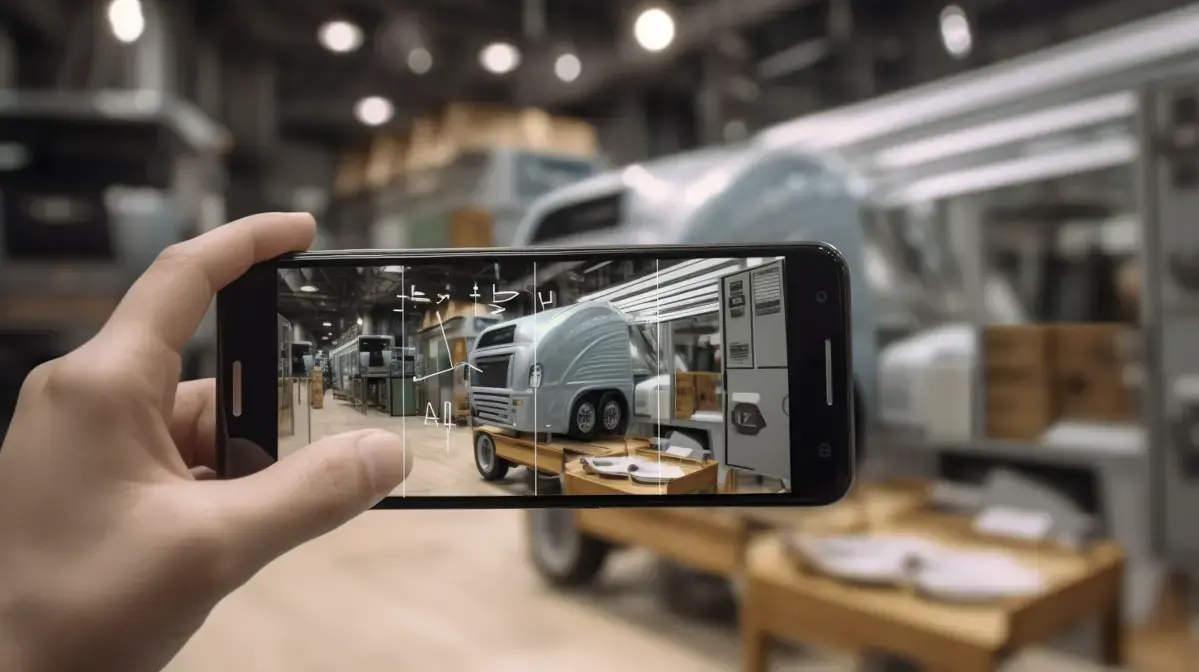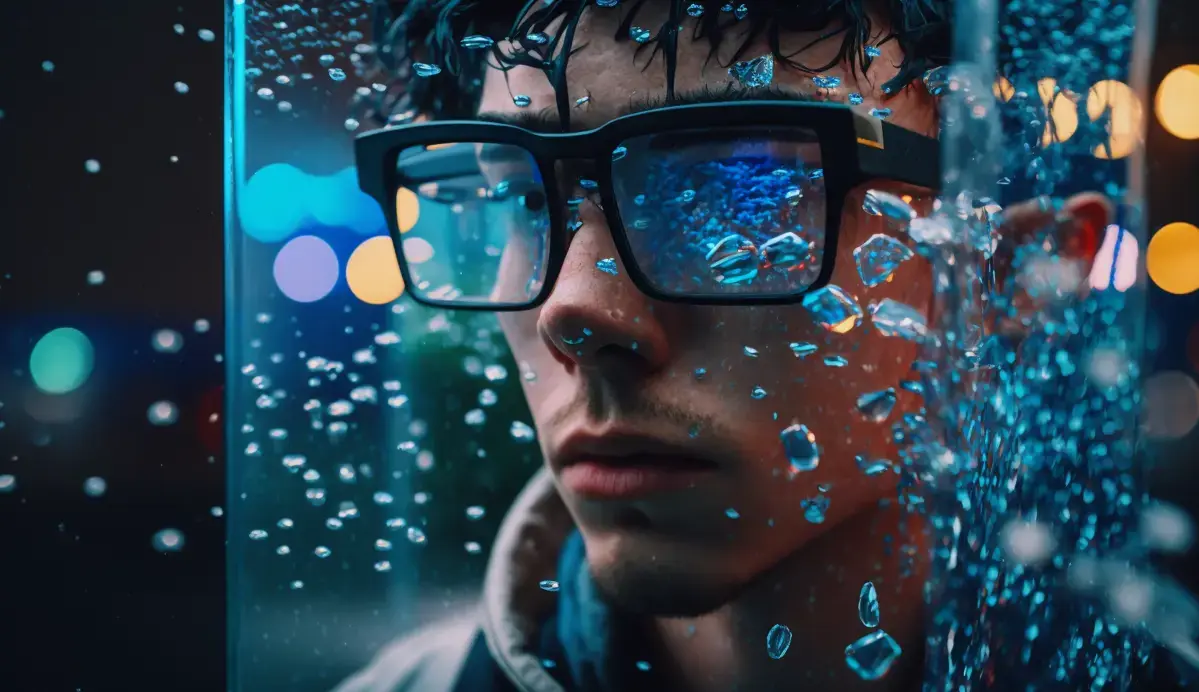One of the most exciting aspects of augmented reality (AR) and virtual reality (VR) is their potential to revolutionize the way we shop. Retailers are already experimenting with AR in stores, allowing customers to try on clothes virtually or see how furniture looks in their homes before making a purchase. This technology will only become more sophisticated and widespread, giving shoppers a truly immersive experience that could make traditional e-commerce seem dull by comparison.
But it’s not just shopping that stands to benefit from AR and VR – media consumption is also being transformed by these technologies. Imagine watching a film or TV show where you can interact with characters or explore environments beyond what’s seen on screen. Or reading a book where the text comes alive around you as illustrations appear all around.
The possibilities for both entertainment and education are endless, which is why some experts predict that AR and VR will eventually replace traditional forms of media entirely.
If you want to stay ahead of the curve when it comes to this futuristic tech, be sure to check out Argeopin’s guide on Augmented Reality here.
Table Of Contents
- Key Points
- Introduction to Augmented Reality and Virtual Reality in Shopping and Media Consumption
- How Augmented Reality is Revolutionizing the Way We Shop
- The Impact of Augmented Reality on Consumer Behavior
- Interesting Facts
- Advantages of Incorporating Augmented Reality into Retail Strategies
- Implications for Businesses: Embracing the Future of Shopping through Augmented Reality
- A Look at the Future: What’s Next for Augmented Reality in Media Consumption?
- FAQs
- Key Takeaways

Key Points
- Augmented reality and virtual reality are transforming the way we shop and consume media.
- The technology allows for immersive experiences that enhance customer engagement and satisfaction.
- Retailers can use AR/VR to showcase products, provide virtual try-ons, and create interactive store displays.
- The future of shopping will likely involve a blend of physical stores with augmented digital experiences.
Introduction to Augmented Reality and Virtual Reality in Shopping and Media Consumption
Augmented Reality (AR) and Virtual Reality (VR) are rapidly transforming the world we live in. From entertainment to education, healthcare to retail, these technologies have created a whole new world of interactive experiences. But what exactly is AR and VR?
Imagine walking into a store where you can see augmented versions of products or even try them on virtually before making a purchase- that’s AR at work. In recent years, retailers worldwide have embraced this technology as it has revolutionized the way customers shop by providing an immersive experience that was previously not possible. Consumers can now better visualize how furniture will look inside their homes before making purchases or how clothing items fit without physically trying them on.
On the other hand, virtual reality creates entirely new dimensions for consumers with its ability to place users in entirely different worlds. In media consumption, VR allows individuals to experience movies and games like never before with complete immersion in another realm along with soundscapes facilitating total sensory engagement.
Retailers such as IKEA use AR while media companies such as Netflix employ both VR & IR technologies creating engaging content capable of transporting viewers within their narratives.
The possibilities are endless. These emerging techs allow us not only interact but also establish deeper connections between people themselves which is critical especially during this period characterized by massive digital transformations globally.
How Augmented Reality is Revolutionizing the Way We Shop
Augmented Reality (AR) and Virtual Reality (VR) are technologies that have rapidly gained popularity in recent years, revolutionizing the way people shop and consume media. AR enables shoppers to try on clothes or visualize furniture in their homes before making a purchase, while VR allows users to experience immersive entertainment.
Nowadays, more businesses are realizing the potential of incorporating AR into their operations as it enhances customer experiences significantly. For instance, IKEA’s app lets customers place virtual furniture pieces in real-life settings using their smartphone cameras; this feature gives them an idea of what they would look like without having to visit multiple stores physically.
Similarly, VR is increasingly becoming central to digital entertainment as platforms such as Netflix create interactive content that immerses viewers fully into its worlds: imagine feeling like you’re inside your favourite TV show. Such developments highlight how technology continues changing existing cultural norms drastically.
The rise of Augmented Reality (AR) & Virtual Reality (VR), two powerful technological advancements impacting both the retail/ecommerce space and immersive entertainment, undoubtedly marks a radical change taking place within our society today.
With this transformation comes endless possibilities for improving customer experiences by truly blending together physical environments alongside augmented ones which we can feel, touch, and see from different angles, thus indulging ourselves deeper within various facets present around us at all times.
For example – Companies such as Ikea use the Ikea App, allowing customers access to virtualized displays across selected ranges available via the application, where users are able to view products situated in real-life areas, seeing exactly what said item looks ‘in-situ’, ensuring confidence in purchasing decisions made based off imagery displaying a true reflection of expectation and imagination of the desired product.
Augmented and Virtual reality disrupt commerce by giving consumers an entirely new way to experience products or services in a manner never before seen, enhancing the overall engagement factor. Additionally, it adds an extra layer of entertainment to traditionally passive activities such as watching television shows or movies.
The Impact of Augmented Reality on Consumer Behavior
Augmented Reality (AR) and Virtual Reality (VR) are two of the most exciting technologies that have emerged in recent years. They have transformed how we interact with information, entertainment, and even shopping. AR overlays digital content onto our physical environment while VR immerses us into a computer-generated world.
In the retail industry, AR has been used to enhance customer experience by providing them with a virtual try-on experience. Customers can use their smartphones or tablets to see how clothes or accessories look on them without having to physically wear it. This helps customers make better purchasing decisions as they can get an idea of what suits them best before making the final purchase.
When it comes to media consumption, VR has revolutionized storytelling allowing viewers to be transported inside immersive worlds where they can explore new places and experiences like never before. With VR headsets becoming more affordable than ever before, people all over the world are now able to access these incredible experiences from their own homes.
But what does this mean for businesses? Well if companies want continued success in today’s fast-paced market then embracing AR/VR is essential. By incorporating these technologies into their marketing strategies businesses will be able provide unique value proposition that sets themselves apart from competitors attracting more prospects & sales along way.
Overall both Augmented Reality & Virtual reality are proving themselves as significant players when it comes down one’s shopping / media consumption activities- increasing engagement rates whilst delivering personalised memorable moments between brand & consumer – paving way tech disruption within industries .
Interesting Facts
-
- Augmented Reality (AR) and Virtual Reality (VR) are expected to become a $96 billion market by 2023.
- The global augmented reality market size was valued at USD 5.1 billion in 2019 and is expected to grow at a compound annual growth rate (CAGR) of over 43% from 2020 to reach USD $140.98 Billion by the end of the forecast period.
- In China, online retailer JD.com launched an AR makeup feature that enables users to try on virtual lipstick shades using facial recognition technology.
- Oculus Go VR headset comes with built-in speakers which offer an immersive audio experience without requiring headphones or earbuds.

Advantages of Incorporating Augmented Reality into Retail Strategies
Augmented Reality (AR) and Virtual Reality (VR) are two emerging technologies that have revolutionized the retail industry. AR and VR are changing the way we shop, interact with products, and consume media content. These technologies blend virtual elements with reality to create an interactive experience for users.
For instance, many cosmetics brands now use AR technology in their mobile apps to allow customers to “try on” makeup virtually before buying it. This way shoppers can see how a certain shade of lipstick or eye shadow would appear on them without having to physically try it out.
Media companies have also jumped onto this wave by using VR technology to provide immersive experiences for viewers. From concerts that enable fans worldwide access live events virtually from their homes via VR headsets such as Oculus Rift or Google Daydream View devices – these once-in-a-lifetime experiences can now be enjoyed anywhere anytime.
The possibilities seem limitless as more businesses explore innovative ways in which they could leverage augmented reality’s unique characteristics; e.g., visualizing home decor products’ positioning & measurements directly into your living room space using IKEA’s Place app when shopping online.
Implications for Businesses: Embracing the Future of Shopping through Augmented Reality
Augmented Reality (AR) and Virtual Reality (VR) have taken the world by storm in recent years, with many industries adopting these technologies to revolutionize the way they do business. One field where AR and VR are making a significant impact is shopping and media consumption. These technologies allow users to experience products in a whole new way, providing an immersive experience that goes beyond traditional methods.
Imagine walking down a busy street filled with shops on either side of you; suddenly, your phone buzzes as you receive an alert from one of your favorite stores informing you about their latest fashion line launch. You click on the notification link only to find yourself transported into an entirely different world- virtual clothing racks hang before your eyes while trendy models strut past wearing the newest designs from that store’s collection. This experience is not just limited to clothes; it can be applied across various domains such as furniture shopping or home decor.
One key benefit of AR/VR technology when it comes to consumerism is its ability for product visualization – With some devices like Google Lens or Snapchat Filters,”trying on” clothes virtually has never been easier. Since people can visualize themselves using any product before buying it – whether trying out makeup shades or imagining how furniture would fit into their homes – this technology makes decision-making much easier.
In conclusion, Augmented reality/virtual reality provides companies with opportunities for creating unique experiences which cannot be offered through other channels. Although there may still be challenges around widespread adoption due largely because not everyone owns compatible hardware yet– however given how quickly we’re moving towards more accessible tech solutions, it doesn’t seem unlikely that these issues will soon dissipate completely.
A Look at the Future: What’s Next for Augmented Reality in Media Consumption?
Augmented Reality (AR) and Virtual Reality (VR) are two rapidly evolving technologies that have significantly impacted the way consumers engage with media and shopping. AR adds digital elements to live camera feeds, creating an immersive experience where objects appear to be in the real world. VR, on the other hand, transports users into a simulated environment using specialized headsets.
In recent years, retailers have begun incorporating these technologies into their marketing strategies as they present exciting new opportunities for engagement and customer interaction. For instance, many companies now offer virtual try-ons for fashion products or furniture items through AR-enabled apps or websites like IKEA’s Place app that lets customers see how furniture will look in their space before buying it.
Media consumption has also been revolutionized by these technologies – imagine watching your favorite movie on a VR headset where you feel like you’re inside of it. With immersive experiences such as concerts or sporting events being made available through VR headsets connected with game consoles such as PlayStation is just one example of how content creators are embracing this technology.
Being able to interact with both physical objects unbound by timezones is something truly special about augmented reality technology which appeals not only shopkeepers but casual consumers alike can create lasting memories within seconds. The combination of storytelling with interactive visual aids makes experiences more memorable than ever before.
Overall Augmented & Virtual Reality present us all countless opportunities whether we’re looking at improving our shopping experience from home during times when going out isn’t possible or experiencing media consumption in ways never thought possible there really seems no end when thinking what could be experienced next.
FAQs
What is augmented reality?
Augmented Reality (AR) is an interactive experience that enhances the real world by overlaying digital information on top. It can be experienced through a smartphone or tablet camera, AR glasses or headsets.
What is virtual reality?
Virtual Reality (VR) provides an immersive experience where the user feels as though they are in a completely different environment created digitally. VR generally requires a headset to enter into this simulated world.
In what ways can AR and VR enhance shopping experiences?
Both technologies have immense potential to revolutionize shopping experiences for customers by providing them with more visualizations of products before buying them, allowing businesses to create unique and interactive store features and displays, offering personalized recommendations based on individual customer data analysis, among other benefits.
How do you see AR/VR changing media consumption in coming years?
Experts believe that both these technologies will continue their steady growth trajectory as more consumers turn towards online streaming platforms for entertainment from home. They predict it will enable viewers to immerse themselves deeper into content – whether it’s via films/games/sports events/documentaries – giving users new levels of interactivity with enhanced visuals so they feel like they’re part of the action rather than just watching from afar.

Conclusion
Augmented Reality and Virtual Reality have revolutionized modern shopping and media consumption. The technology has made it possible for businesses to create immersive experiences for their customers, allowing them to interact with products in ways that were previously impossible. As the technology advances, we can expect more industries to utilize these tools in creating unique experiences that will change the way we live our lives.
Virtual reality headsets have become more affordable than ever before, making it accessible even for average consumers. More companies are now developing VR content as they realize its potential impact on consumer behavior.
On the other hand, AR is becoming increasingly popular with retail stores as they try to enhance customer experience while providing top-notch services using mobile devices at their disposal.
In conclusion, AR and VR technologies continue evolving rapidly offering endless possibilities across multiple platforms including gaming industry etc., showcasing how versatile this tech really is. With new ideas being implemented every day by creative people worldwide within different fields such as entertainment or education – there seems no limit what could be next.
Key Takeaways
-
-
- Augmented reality and virtual reality are transforming the way consumers shop and consume media.
- The technology allows for immersive experiences that can enhance product visualization, customization, and education.
- Retailers can benefit from reduced costs associated with physical stores while reaching a wider audience through digital channels.
- Virtually try-on options in the fashion industry have shown to increase consumer confidence in online purchases and reduce returns.
- AR/VR technologies are still evolving at a rapid pace, making it crucial for companies to stay up-to-date on new developments to remain competitive.
-

